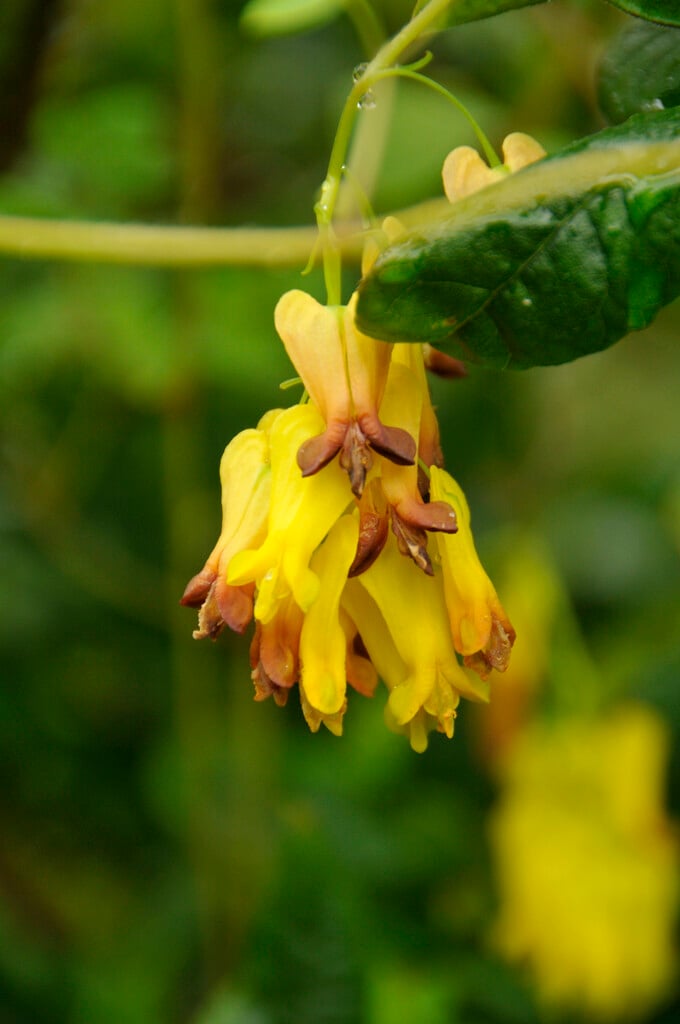Dactylicapnos scandens
yellow bleeding heart vine
A herbaceous climber with deeply lobed leaves 15-30cm long, some with tendrils. Yellow or sometimes white 2.5cm long flowers, occasionally tipped with pink or purple, emerge from mid-spring to late summer
Synonyms
Dicentra thalictrifoliaDicentra scandens f. thalictrifolia
see moreDicentra scandens
Corydalis scandens
Size
Ultimate height
2.5–4 metresTime to ultimate height
2–5 yearsUltimate spread
1–1.5 metresGrowing conditions
Moisture
Moist but well–drainedpH
Acid, Alkaline, NeutralColour & scent
| Stem | Flower | Foliage | Fruit | |
| Spring | Yellow | Green | ||
|---|---|---|---|---|
| Summer | Yellow | Green | ||
| Autumn | Green | |||
| Winter |
Position
- Partial shade
Aspect
West–facing or East–facing
Exposure
Sheltered Hardiness
H4Botanical details
- Family
- Papaveraceae
- Native to GB / Ireland
- No
- Foliage
- Deciduous
- Habit
- Climbing
- Potentially harmful
- Can cause stomach upset if ingested and contact with foliage may aggravate skin allergies. Wear gloves and other protective equipment when handling
- Genus
Dactylicapnos (formerly included in Dicentra) are frost-tender deciduous climbing perennials or annuals, with compound or pinnate leaves, and flowers with heart-shaped outer petals which are characteristically pouched at the base, convergent to the tips, then bent outwards. These are usually borne in small, sometimes hanging, clusters, followed by pods, some strikingly inflated
- Name status
Correct
- Plant range
- C Nepal to S China
How to grow
Cultivation
Grow in partial shade in a moist but well-drained, humus rich soil. A soil rich in leaf mould is ideal. Avoid soils that are prone to drying out or staying wet. Plant in a sheltered spot
Propagation
Propagate by seed; sow fresh seed in vermiculite or grit and place in a cold frame through winter (stratifying). If the clump is large enough, propagation may be possible by division when the plant is dormant
Suggested planting locations and garden types
- City and courtyard gardens
- Wall side borders
Pruning
Cut back foliage down to ground level at end of growing season
Pests
Diseases
Generally disease-free
Love gardening
Sign up to receive regular gardening tips, inspiration, offers and more
View our Privacy Policy
Get involved
The Royal Horticultural Society is the UK’s leading gardening charity. We aim to enrich everyone’s life through plants, and make the UK a greener and more beautiful place.
